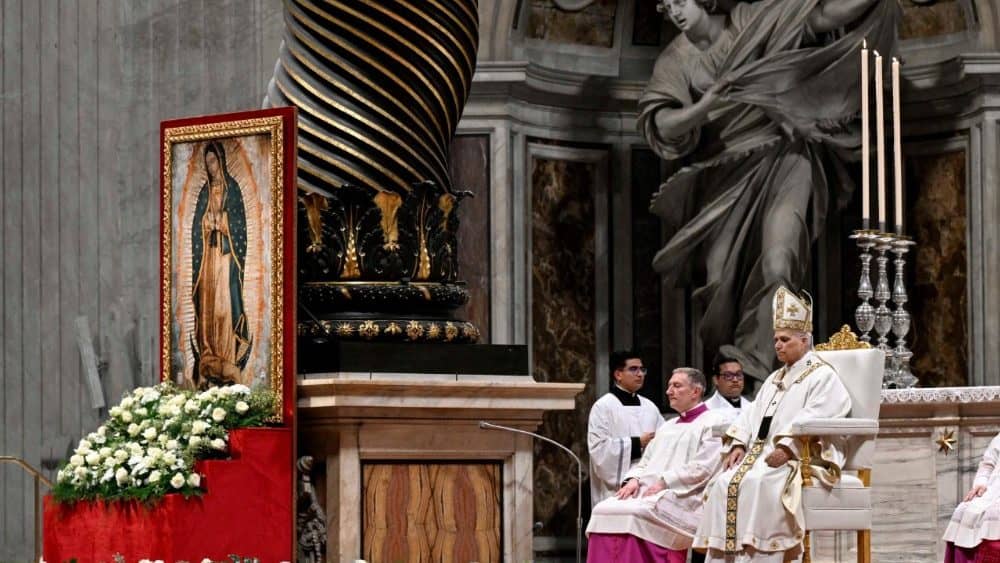“I am Francis, your neighbor.”
The line fell a little flat, but that was inevitable. It was impossible for Archbishop Francis George to escape the memory of his predecessor at his own installation Mass.
It was not quite six months after Cardinal Bernardin’s death when Archbishop George introduced himself. Bernardin had begun his ministry in Chicago with an unforgettable greeting: “I am Joseph, your brother,” words drawn from a high moment of reconciliation in the Book of Genesis coming after a long, divisive period in Chicago. After many years leading the archdiocese, Cardinal Bernardin’s illness and death moved the nation and the world. Archbishop George came home to Chicago under Bernardin’s long shadow. His greeting, an echo of Cardinal Bernardin’s, was an acknowledgement of what everybody was thinking.
There is no avoiding that Joseph Bernardin and Francis George were profoundly different kinds of men. Forget the obvious differences — conservative or liberal, etc. More fundamentally, they were much different personalities.
Joseph Bernardin was a controlled, perhaps too-controlled personality. He labored over every word he said in public. The drafts of his speeches, talks, and homilies show careful preparation and editing. Bernardin’s friends still talk about how he never said grace over a meal without a script, ever conscious of shaping how he presented himself.
Francis George was an academic, a scholar. He spoke readily without notes, and earned his reputation for a quick intellect. George never hesitated to speak his formidable mind. Sometimes that spontaneity left him sounding tart. But, as often, his openness to where a conversation or an argument could lead made him someone who would listen to everyone like a good teacher.
The differences between these two archbishops of Chicago are not the interesting story. We do them both a disservice if we do not take note of some important similarities.
Both men possessed remarkable intelligence.
Each in his own way, both Bernardin and George were leaders in the Church that others instinctively followed — consummate Churchmen.
Both men had known childhood tragedy. Bernardin had lost his father when he was 6, and George was struck with polio at 13. Those early struggles strengthened and defined them.
Both were holy men who loved meeting people in the parishes in and around Chicago.
Amid these similarities and differences, these two cardinals can tell us something.
Among the last things he did before his life ended, Cardinal Bernardin launched the Catholic Common Ground Initiative. With Common Ground, Bernardin hoped to foster dialogue among Catholics, overcome divisions, and build up communion in the Church.
Common Ground itself became a lightning rod almost immediately, its rejection another symbol of the differences between liberals and conservatives that Bernardin had hoped to overcome. Yet I look back now on Cardinal Bernardin and Cardinal George, and in them together I see something like the Common Ground Initiative’s greatest hopes realized.
Something else they had in common: Both Bernardin and George were committed to implementing the Second Vatican Council. The Council had looked to the modern world to update the Church in a process called aggiornomento. But the Council also looked back to the history of the Church for inspiration, a return to the practices of the early Church called ressourcement. The Council was shaped by the certainty that true reform is not found in only the present or exclusively in the past. It is in their meeting, in a precarious space between what progressives value and what traditionalists value, that we find the truth.
I never met Cardinal Bernardin. But I met Cardinal George a few times, first in Rome when Pope John Paul II elevated him to the College of Cardinals in 1998. He chatted with a small group of us, and someone asked about his new vestments as a cardinal. He told us they weren’t new, and he opened his ferriaolo — his red silk cape — to show us where it had been altered. He told us that Cardinal Bernardin was much taller than he was, but a little thread fixed the problem. He didn’t want the archdiocese to have to buy new vestments.
It wasn’t hard to admire Cardinal George’s Christian simplicity. Looking back, he reminds me of Pope Francis in that way.
But most of all, I remember Cardinal George standing in Rome wearing Cardinal Bernardin’s vestments, a striking symbol of the Church’s unity that succeeds quietly in all that we do.
In Cardinal Bernardin and in Cardinal George, Chicago and the world saw Common Ground in action. Now as they both rest in the Lord, their work — our work — to build up communion in the Church goes on.
Steven P. Millies is associate professor of political science at the University of South Carolina Aiken. Originally from Chicago, he is writing a biography of Cardinal Bernardin for Liturgical Press, due in 2016.
















